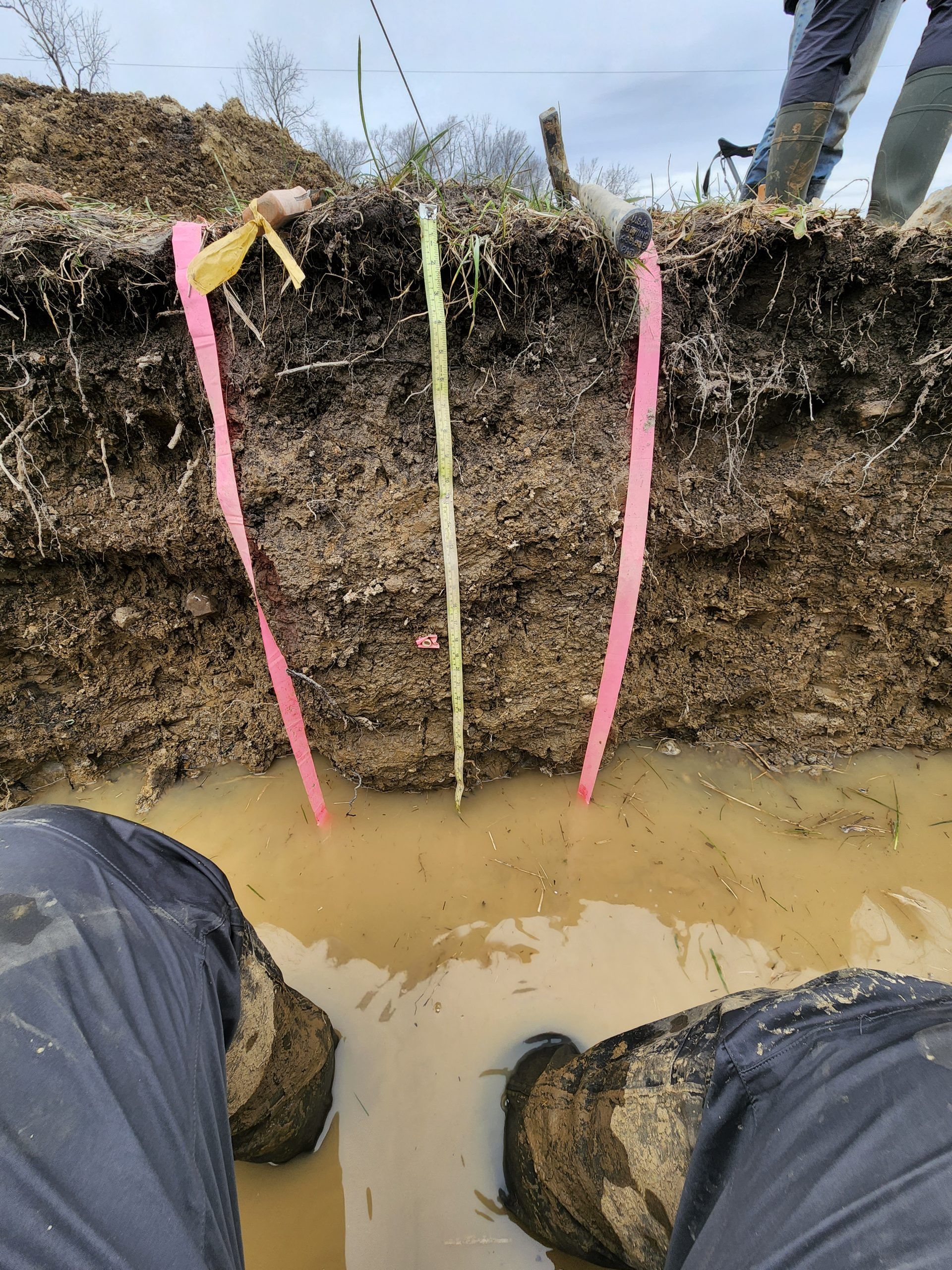NC State Takes 2nd in National Collegiate Soils Contest

“Hand texturing soils when you can barely feel your hands is tough,” mused North Carolina State Soil Judging Team senior Jacob Cheers. “Day one was in the low 30s with 20 miles per hour winds and intermittent sleet. The soil pits had six to eight inches of standing water. Our feet were freezing and we had to go to the van almost every hour to warm up. But Dr. Ricker helped us understand landscape and parent material patterns. That allowed us to compete at a high level.”
National Collegiate Soils Contest

The National Collegiate Soils Contest is a multi-day team and individual competition where students square off their soil knowledge against each other and local experts. Students identify, evaluate, classify and describe soil profiles endemic to the area. The tri-societies (the American Society of Agronomy, the Crop Science Society of America, and the Soil Science Society of America) oversee the event, which rotates annually across different college campuses.
This year’s event was held last week amidst chilly, wet conditions at The Ohio State University where 21 schools and over 140 participants braved brutal weather to compete and network for graduate school and university positions.
Since its inception in 1960, NC State’s soil judging team has regularly placed in the competition’s top 10. But this year’s second-place finish is the highest in team history (tied with the 1986 team) and is especially noteworthy because of the practice limitations from COVID restrictions. The 2020 event was canceled and the 2021 competition was held virtually.
Crop and Soil Sciences assistant professor Matt Ricker leads the team and teaches the related one-credit hour class.
“COVID severely limited our undergraduates from having traditional field experiences,” Ricker said. “Four of our participants this year started soil judging competition in 2021 when we could only look at photos to make determinations. But those students stuck with it and were rewarded for their efforts with field experiences last fall at the UT-Knoxville regionals and now nationally at Ohio State. This is a testament to their ability to learn quickly and their willingness to put in the time to be successful.”
Next year’s events will be held at Clemson University and Oklahoma State University. NC State will host the regional competition in 2025 and the nationals in 2026.
Qualified to Go Global
In addition to the team’s stellar overall performance, two students contributed top-ten individual competition scores. Curtis Murphy and Jacob Cheers placed second and eighth (respectively) out of 84 participants.
“Had it been any other year, we might have just taken a rain check due to the challenging conditions and the sub-optimal timing. This year, however, was my last year of eligibility. So, I was ecstatic to place second out of the cream of the crop of soil judgers from across the country,” Murphy said.
“I would like to thank Dr. Ricker for the time and effort he has put into revamping the NC State Soil Judging Team. If anyone can raise and prepare a team to get State’s first national victory in the history of the program, it will be him. I look forward to watching and helping from the sidelines in the future as this program grows to accomplish even bigger things.”
Murphy’s top-four finish qualifies him for the quadrennial World Congress of Soil Science. This international event will be held in Glasgow, Scotland, in July 2022.
“I have full intentions to go to Scotland for the international competition (provided my expedited passport application comes through on time). I look forward to seeing and learning about cool new soils that don’t necessarily form here in North Carolina. And since this will be my first trip abroad, I also look forward to experiencing a different culture overseas.”

Practical Practice
Soil judging teaches hirable skills that are transferable to any career path in soil science.
“Many consultants and government hiring managers specifically look for soil judging on resumes (as do I when hiring graduate students),” Ricker said. “The contest teaches students the ability to make quick determinations about soil morphology, genesis, classification, and interpretations for land use. In many cases, students get to see soils they otherwise would never have the chance to see and to network with other soil programs from across the country. ”
This year’s major contest interpretations included water holding capacity (for crop interpretation); soil carbon storage (for environmental interpretation); erosion risk; and building limitations for roads, houses, and septic systems (for engineering interpretations) based on soil and site characteristics.
“Equipping students with field-ready skills, like soil judging, is a key feature of our academic programs,” said Jeff Mullahey, crop and soil sciences department head. “It’s a huge advantage for students to merchandise that field experience on their resumes and in interviews. Employers quickly see that our graduates have the knowledge and training to be successful from the start.”

Can You See Yourself in Crop and Soil Sciences?
If you are looking for an academic path that provides hands-on training and real-world impact, consider crop and soil sciences. Our students learn from expert professors and enjoy competitive adventures every day.
Discover more about student degree pathways including deep dives into our soil science and turfgrass programs. Then sign up for an undergraduate’s guided email tour of our Crop & Soil Sciences Department.
Connecting students with careers that solve global challenges is just part of how we are growing the future.
- Categories: